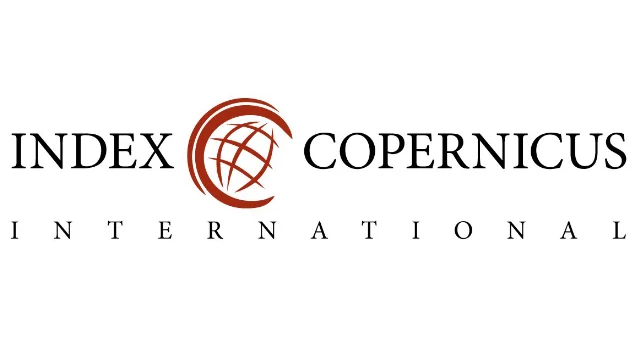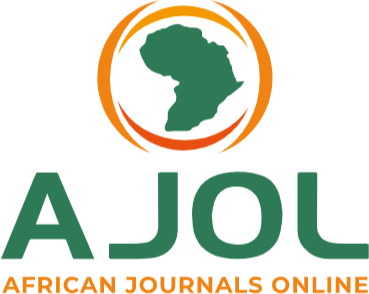Biofacilitation Potential of Sawdust on Landfarming of Petroleum Hydrocarbons Polluted Soils
Keywords:
Sawdust, Green biomass, bio-facilitation, diesel-polluted soil, landfarmingAbstract
S. U. Oghoje*, C. Ejeomo, U. Ugbune , J. E. Ukpebor , A. K Asiagwu and E. E. Ukpebor
The purpose of this study is to reveal the biofacilitation potentials of green biomass (GB) using dried and sieved sawdust (DSS) as a typical type. The effects of the DSS on water retention capacity (WRC), leaching of diesel range organics (DROs) and landfarming of 5% diesel-spiked soils were investigated according to standard methods and procedures. Hydrocarbon analyses were carried out according to USEPA recommendations using GM-MS. The results showed that green biomass could increase the WRC of oil-contaminated soils significantly. For instance, 2.5, 5 and 10 % DSS composting of 5 % diesel-contaminated soil increased its WRC by about 35, 36 and 45 % respectively as compared to the control which was 34 % and for 10 % pollution, the effects were 31, 33, and 40 % respectively as against the control soil whose WRC was about 30 % which reveals that the higher the degree of pollution, the more the relative effects of GBM on the WRC of the polluted soils. Also, the different levels of composting reduced the leaching of the DROs by about 43, 51, and 74 % respectively. Furthermore, the weather-moist DSS was found to contain 3.5 x 104 and 4.0 x104 cfu of hydrocarbon utilizing bacteria and fungi respectively and 5 and 10 % of the GBM promoted the total petroleum hydrocarbons (TPH) removal by 47 and 52 % respectively in 56 days. The various results have revealed that DSS (And by extension all GBM) could ease the accessibility of soil pollutants by soil biodegrades and hence, optimise the bioremediation of oils polluted soils.
Downloads
Published
Issue
Section
Similar Articles
- Izuagbe Gilbert Osigbemhe , Muluh Emmanuel Khan, SYNTHESIS, SPECTROSCOPIC CHARACTERIZATION AND BIO-INVESTIGATION of N-(2-furylmethylidene)-1,3, 4-thiadiazole-2-amine and its Iron (III) COMPLEXES , Communication In Physical Sciences: Vol. 12 No. 4 (2025): VOLUME1 2 ISSUE 4
- Okoche K. Amadi, Uloma O. Akoh, Innocent A. Okoro, Egwuobasi Nwabuokechi,, Decontamination of Pb2+, Cd2+ and Ni2+ Polluted Water by Adsorption Unto Butterfly Pea (Centrosema pubescens) Seed Pod , Communication In Physical Sciences: Vol. 6 No. 1 (2020): VOLUME 6 ISSUE 1
- Nsikak Bassey Essien, Rice Husk as Precursor for Silicon Oxide Nanoparticles: Synthesis and Characterization , Communication In Physical Sciences: Vol. 11 No. 4 (2024): VOLUME 11 ISSUE 4
- Richard Alexis Ukpe, Exploration of Orange Peel Waste as Precursor for the Synthesis and Characterization of highly Crystalline and Mesoporous Silicon Oxide Nanoparticles , Communication In Physical Sciences: Vol. 11 No. 2 (2024): VOLUME 11 ISSUE 2
- Ahamefula A. Ahuchaogu, Chukwuemeka T. Adu, Review of Reverse Osmosis as Green Technology against Water Supply: Challenges and the way Forward , Communication In Physical Sciences: Vol. 6 No. 1 (2020): VOLUME 6 ISSUE 1
- S. Sani , I. T Siraj , Copper(II) and Zinc(II) Complexes Synthesized by Green Mechanochemical Method and their Antimicrobial Studies , Communication In Physical Sciences: Vol. 7 No. 2 (2021): VOLUME 7 ISSUE 2
- Obonin, Samuel Sabastine, Amadi, Ugwulo Chinyere, Sylvanus, Kupongoh Samaila, The Effects of External Toxicants on Competitive Environment: A Mathematical Modeling Approach , Communication In Physical Sciences: Vol. 11 No. 4 (2024): VOLUME 11 ISSUE 4
- Felicia Uchechukwu Okwunodulu, Stevens Azubuike Odoemelam, Remediation of effluents polluted with toxic heavy metals using Cola nitida pod husk , Communication In Physical Sciences: Vol. 8 No. 4 (2022): VOLUME 8 ISSUE 4
- Iniofon Udom, Grace Cookery, Paul Ocheje Ameh, Investigation of Acanthus montanus Leaves Extract as Corrosion Inhibitor for Copper in 2 M Sulphuric Acid , Communication In Physical Sciences: Vol. 12 No. 3 (2025): VOLUME 12 ISSUE 3
- Muhd Auwal Zubair, Nura Muhammad, Aminu Sabo Muhammad, Abdulrasheed Luqman, Comparative Study on the Effect of Organic and Inorganic Fertilizers on Maize Yield , Communication In Physical Sciences: Vol. 8 No. 4 (2022): VOLUME 8 ISSUE 4
You may also start an advanced similarity search for this article.




